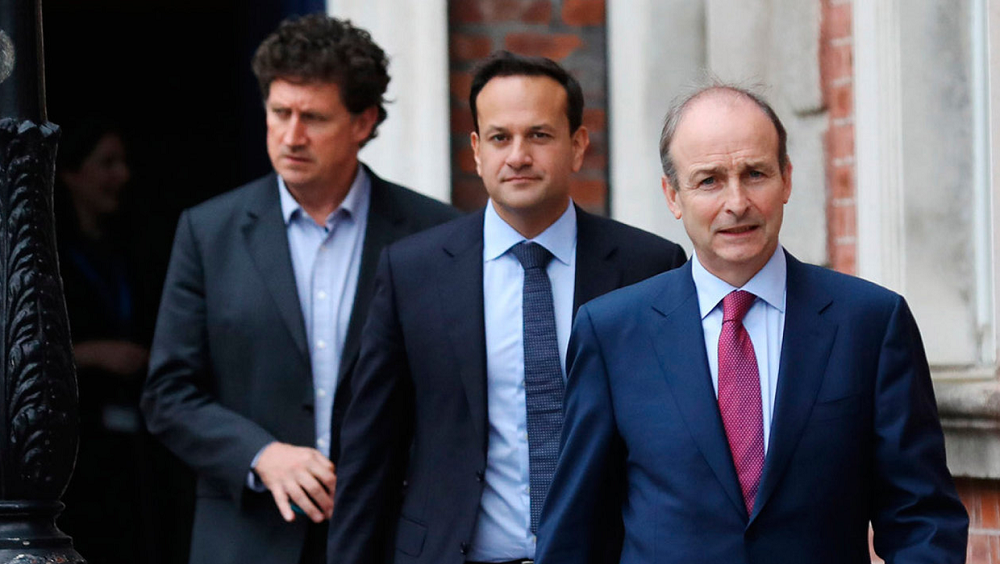The capture of Cerberus, the three-headed dog of Hades that guarded the gates of the Underworld, was arguably Heracles’ most dangerous and famous of his Twelve Labours. (Cerberus was also made famous by Harry Potter and the Philosopher’s Stone for any Fluffy fans out there.)
In one version of the tale, Heracles, rather than charge headfirst into battle with Cerberus, first directed his powers of persuasion at Hades. With the help of the troubled souls of the Underworld, he proposed that Hades allow him to bring the dog to the surface world. Hades agreed, provided that Heracles did not bring it to harm.
We now face our own Cerberus in Ireland: a three-headed coalition government in the form of Fianna Fáil (FF), Fine Gael (FG), and the Green Party (GP).
While previous Oireachtas formations had a clearer structure—a majority party, an opposition party, and other influencers around the edges—like Heracles, public affairs and policy professionals must now use their own Olympian persuasion skills to wrangle and influence a larger and more complicated beast.
Three times the effort
Since the election, Ireland’s leading politicians have had a fight to unite their parties under a common goal. Covid-19 was not going to wait for them to reach agreement.
While the urgent need to form a Government spurred on the three main parties, the compromise was costly and clear, resulting in a 120+ page document of aspirations and good intentions against a backdrop of resignations and leadership challenges.
For a time the cabinet was resolute. However, what has become increasingly clear in recent weeks is the problem of continued unity. With the announcement of the latest Covid-19 restrictions, the cracks began to appear between ministers, as well as between the cabinet and the wider Oireachtas membership.
It is now difficult to know where the three leading parties stand on any subject. This presents significant complexities for lobbyists. Where do you even start?

In approaching any public affairs strategy, one typically maps out the key influencers, advocates, and opposition for the cause or issue, identifying where, how, and when to engage to maximise the potential for impact.
The key targets have tended to be those either backing the issue in the Government, to get it over the line, or those in opposition to it, to support the issue being amended or thrown out.
But the Cerberus of Leinster House is making it more challenging to understand who these targets are and where they sit in relation to the key policy issue at stake; the Government is not acting as one.
This could mean approaching FF, FG, and the GP as individual stakeholders, in addition to Sinn Féin, the Social Democrats, Labour, and the smaller parties and independents.
This challenge is further compounded by a wave of first-time representatives to get to know, understand, and anticipate. That public affairs strategy is suddenly looking pretty lengthy.
Not only does this have the potential to weaken influence by spreading it thinly across so many targets, but it also opens the lobbying field wide, leaving you more exposed to negative pushback.
Capturing the dog
How, then, can we continue to lobby and engage with the Oireachtas with impact? Who should be prioritised and how?
- Invest in meaningful relationships: you’ll need them over the course of this legislature
With the national response to Covid-19 and the immediate fallout from it taking the policy and budgetary focus for some time to come, much of the Programme for Government could find itself floating along on the periphery of the legislative agenda.
Quick and fast lobbying will not serve you well. Now that the focus of the Dáil is narrow, taking the time to build solid relationships with those who align with your cause could pay dividends in the future.
- He who shouts the loudest: leverage the vocal representatives
The days of quiet puppet-masters behind the scenes could be over. If the last few months have shown us anything, it’s that TDs and Senators who use their speaking time well, engage in committees, and champion a cause will get good airtime and draw a crowd.
The media has been thick with elected representatives who have something to say about what’s going on and aren’t afraid to say it. These stakeholders can be an asset for your public affairs goals when leveraged well.
- Time it right: avoid the jaws of the beast
Pushing for urgent meetings with TDs on a low-priority or niche issue that is not yet in front of the Oireachtas, and in the midst of a pandemic, will do you no favours. Timing will be key to make sure you resonate with your targets.
Get on their radar and use the time you do have to educate and inform to build awareness of you and your issues. In anticipation of this subject coming down the line, this solid foundation will allow you to ramp up your lobbying activity and make you relevant at the right time.
Like Heracles, lobbyists have a big task ahead of them. Strong relationship-building skills, a keen eye for consistent performers, a knack for timing, and, crucially, patience are key to getting to grips with the Irish Cerberus.

About the author
Lauren brings nearly ten years of experience in public affairs, communications, and project management to 360. She has a special interest in European affairs, policy, and energy, having previously worked at national electricity utility EirGrid, the UK’s Foreign and Commonwealth Office, the Council of European Energy Regulators, and the European Parliament. Lauren has lived and worked in Ireland, the UK, Belgium, and France, and is fluent in French.
